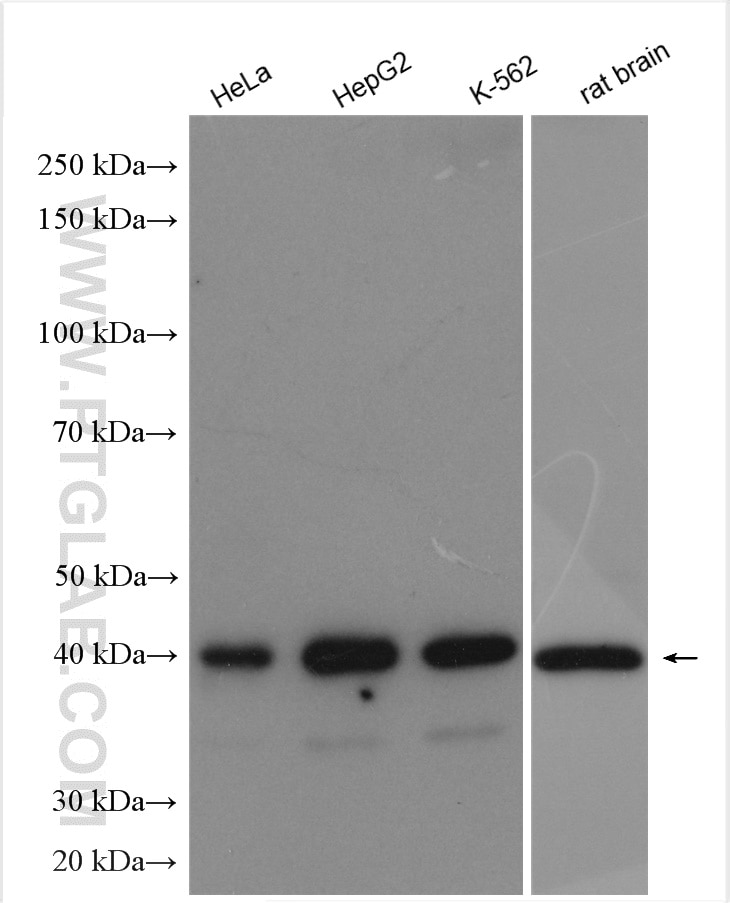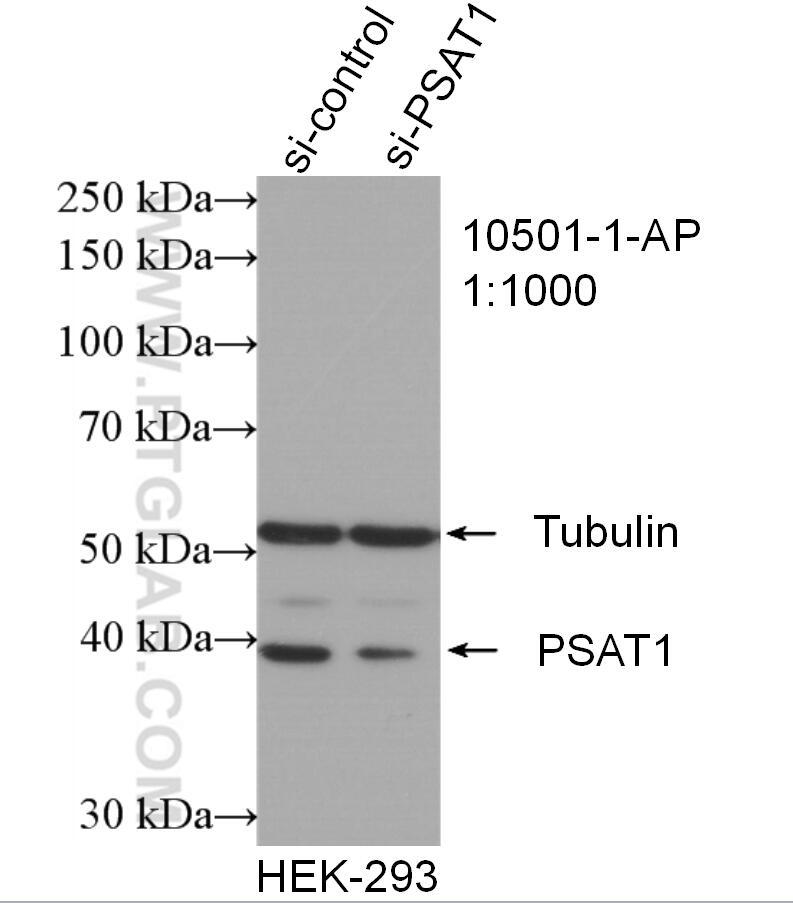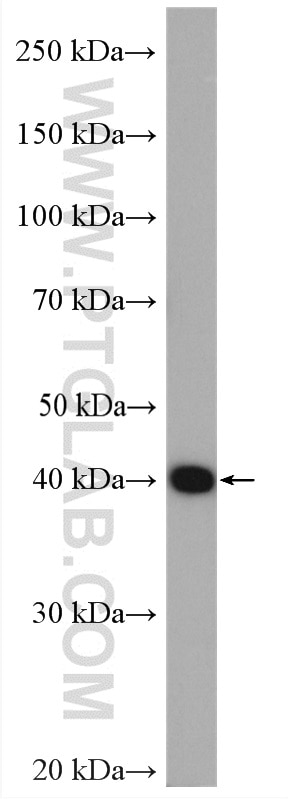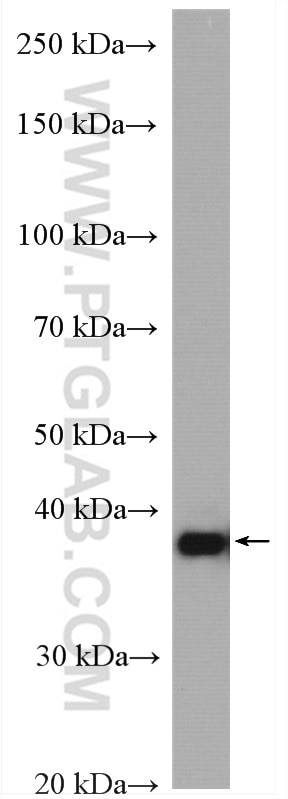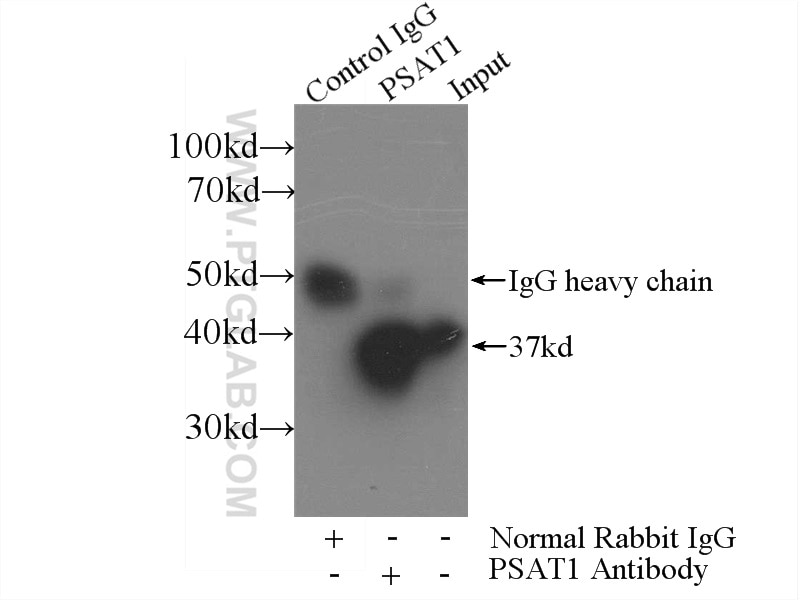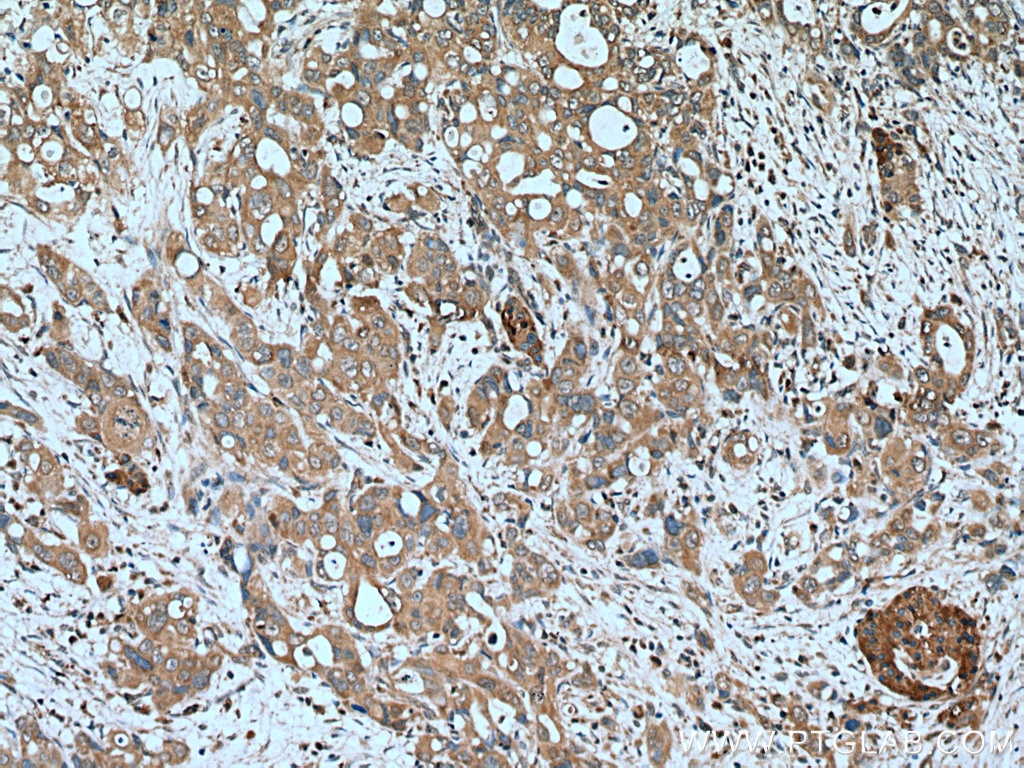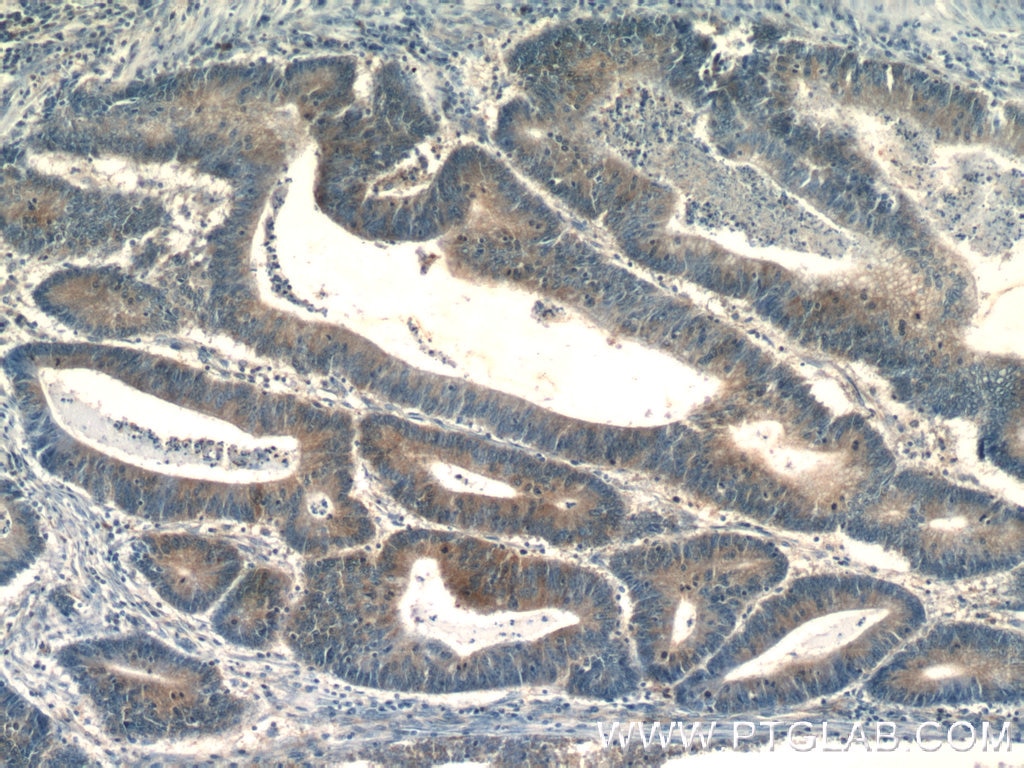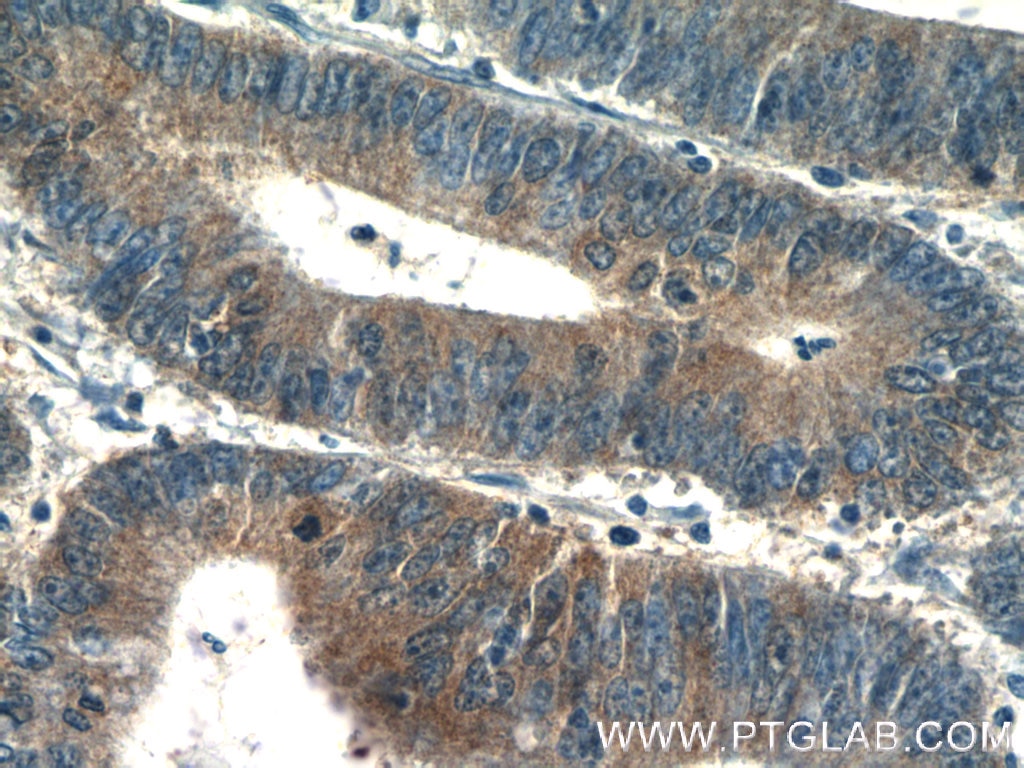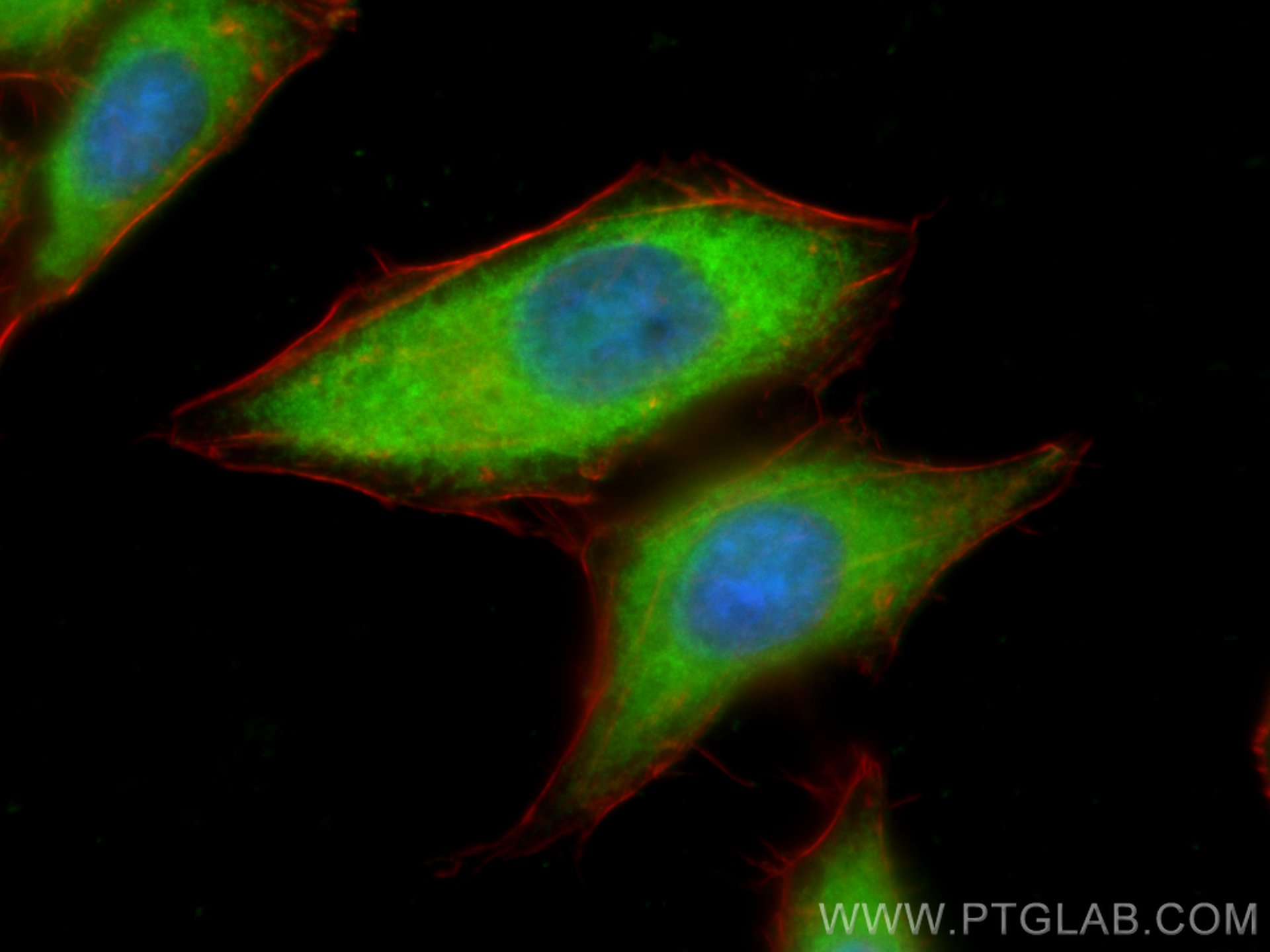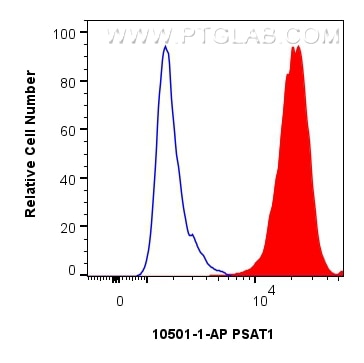- Phare
- Validé par KD/KO
Anticorps Polyclonal de lapin anti-PSAT1
PSAT1 Polyclonal Antibody for WB, IHC, IF/ICC, IP, ELISA
Hôte / Isotype
Lapin / IgG
Réactivité testée
Humain, rat et plus (2)
Applications
WB, IHC, IF/ICC, IP, CoIP, ELISA
Conjugaison
Non conjugué
N° de cat : 10501-1-AP
Synonymes
Galerie de données de validation
Applications testées
| Résultats positifs en WB | cellules HeLa, cellules HEK-293, cellules HepG2, cellules Jurkat, cellules K-562, tissu cérébral de rat |
| Résultats positifs en IP | cellules HeLa |
| Résultats positifs en IHC | tissu de cancer du pancréas humain, tissu de cancer du côlon humain il est suggéré de démasquer l'antigène avec un tampon de TE buffer pH 9.0; (*) À défaut, 'le démasquage de l'antigène peut être 'effectué avec un tampon citrate pH 6,0. |
| Résultats positifs en IF/ICC | cellules HepG2, |
| Résultats positifs en FC (Intra) | cellules HepG2, |
Dilution recommandée
| Application | Dilution |
|---|---|
| Western Blot (WB) | WB : 1:5000-1:50000 |
| Immunoprécipitation (IP) | IP : 0.5-4.0 ug for 1.0-3.0 mg of total protein lysate |
| Immunohistochimie (IHC) | IHC : 1:200-1:800 |
| Immunofluorescence (IF)/ICC | IF/ICC : 1:200-1:800 |
| Flow Cytometry (FC) (INTRA) | FC (INTRA) : 0.25 ug per 10^6 cells in a 100 µl suspension |
| It is recommended that this reagent should be titrated in each testing system to obtain optimal results. | |
| Sample-dependent, check data in validation data gallery | |
Applications publiées
| KD/KO | See 10 publications below |
| WB | See 79 publications below |
| IHC | See 15 publications below |
| IF | See 4 publications below |
| CoIP | See 2 publications below |
Informations sur le produit
10501-1-AP cible PSAT1 dans les applications de WB, IHC, IF/ICC, IP, CoIP, ELISA et montre une réactivité avec des échantillons Humain, rat
| Réactivité | Humain, rat |
| Réactivité citée | Humain, porc, souris |
| Hôte / Isotype | Lapin / IgG |
| Clonalité | Polyclonal |
| Type | Anticorps |
| Immunogène | PSAT1 Protéine recombinante Ag0776 |
| Nom complet | phosphoserine aminotransferase 1 |
| Masse moléculaire calculée | 40 kDa |
| Poids moléculaire observé | 37-40 kDa |
| Numéro d’acquisition GenBank | BC004863 |
| Symbole du gène | PSAT1 |
| Identification du gène (NCBI) | 29968 |
| Conjugaison | Non conjugué |
| Forme | Liquide |
| Méthode de purification | Purification par affinité contre l'antigène |
| Tampon de stockage | PBS with 0.02% sodium azide and 50% glycerol |
| Conditions de stockage | Stocker à -20°C. Stable pendant un an après l'expédition. L'aliquotage n'est pas nécessaire pour le stockage à -20oC Les 20ul contiennent 0,1% de BSA. |
Informations générales
PSAT1, also named PSA and PSAT, belongs to the class-V pyridoxal-phosphate-dependent aminotransferase family and SerC subfamily. It catalyzes the reversible conversion of 3-phosphohydroxypyruvate to phosphoserine and of 3-hydroxy-2-oxo-4-phosphonooxybutanoate to phosphohydroxythreonine. PSAT1 represents a new interesting target for CRC therapy. (PMID:18221502) It may be implicated in altered serine metabolism and schizophrenia spectrum conditions. (PMID:20955740)
Protocole
| Product Specific Protocols | |
|---|---|
| WB protocol for PSAT1 antibody 10501-1-AP | Download protocol |
| IHC protocol for PSAT1 antibody 10501-1-AP | Download protocol |
| IF protocol for PSAT1 antibody 10501-1-AP | Download protocol |
| IP protocol for PSAT1 antibody 10501-1-AP | Download protocol |
| Standard Protocols | |
|---|---|
| Click here to view our Standard Protocols |
Publications
| Species | Application | Title |
|---|---|---|
Cell Metab Serine metabolism antagonizes antiviral innate immunity by preventing ATP6V0d2-mediated YAP lysosomal degradation. | ||
Nat Immunol PERK is a critical metabolic hub for immunosuppressive function in macrophages. | ||
Nat Commun Phosphoglycerate dehydrogenase activates PKM2 to phosphorylate histone H3T11 and attenuate cellular senescence | ||
Nat Chem Biol PSAT1 impairs ferroptosis and reduces immunotherapy efficacy via GPX4 hydroxylation |
